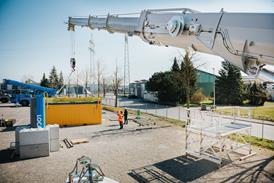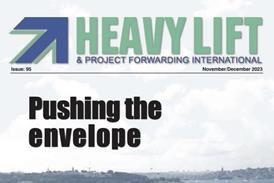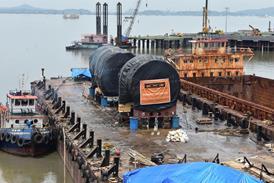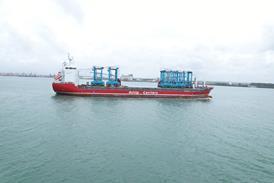October 22 - Shipper demand for 40 ft high-cube containers is still increasing, creating stowage problems for ocean carriers and analytical difficulties for trade forecasters using teu measurements.
The proportion of 40 ft high-cube (9 ft 6 in high) containers in the global maritime container fleet is predicted to exceed 50 percent by the end of this year for the first time. According to Drewry's 2013 Container Census, the equipment's market share reached 49 percent in 2012, and is expected to grow by at least another one percent this year.
The number of high cube containers in the fleet grew by another 8 0rowth last year, up to 15.4 million teu, taking the rise in demand between 2007 and 2012 up to a remarkable 49 percent. It meant that 40 ft HC's share of the total maritime equipment market increased from 41 percent up to 49 percent, or just over one percent per annum, almost entirely at the expense of normal 40 ft 8 ft 6 in high boxes. On the other hand, the proportion of 20 ft containers remained constant at around 33 percent.
The popularity of 40 ft HCs is easy to understand. Being around 13 percent larger than ordinary 40 ft boxes, shippers can load that amount of extra cargo at little to no extra freight cost. Moreover, inland transport is usually charged on a per container basis for light cargo, so there are no extra haulage costs too.
Although much growth in demand for 40 ft high-cube containers has come from reefer shippers, with almost 92 percent of all refrigerated cargo being shipped in the equipment last year, it only took the sector's volume up to 2 million teu. Dry cargo still accounted for the vast majority.
Drewry says that there are two interesting messages that come of this. The first is that the need to stow 9 ft 6 in containers below deck, which results in loss of cargo space for shipping lines, is reaching a critical junction. Whereas nearly all the equipment has been stowed on deck so far, particularly reefers, this cannot continue much longer, bearing in mind that just over 50 percent of a ship's cellular capacity is located on deck. When under-deck stowage is required, as much as 7 ft (2.1 m) can be lost between the top of the last tier of a stack and the main deck, as ship holds are usually designed for 8 ft 6 in boxes. Line of sight (from the navigating bridge) rules will also prevent more containers from being loaded on deck.
The second message is that containerised cargo growth measured in teu has increasingly been underestimated over time. This is because a 40 ft HC container usually only counts as two teu, the same as 2 x 20 ft (8 ft 6 in) boxes, or 1 x 40 ft (8 ft 6 in) container, even though it is approximately 13 percent bigger.
So, in a major trade lane like the eastbound transpacific, where 40 ft equipment is the norm due to light average cargo weights, although year-on-year growth in the first seven months of 2013 was only 1.856 percent measured in teu, it was over 2.2 percent measured in 'constant' teu. The difference may not seem much, but it makes a big difference to economists trying to make sense of the changes between GDP growth and cargo growth. It is also cumulative, so gets bigger over longer periods of time.
Drewry concludes that the share of 40 ft 8 ft 6 in high containers in the global maritime fleet will continue to decline over the next 10 years, thereby increasing the need for more high-cube friendly vessels. This could include the construction of wider - and hence slower - ships with greater deck capacity.















